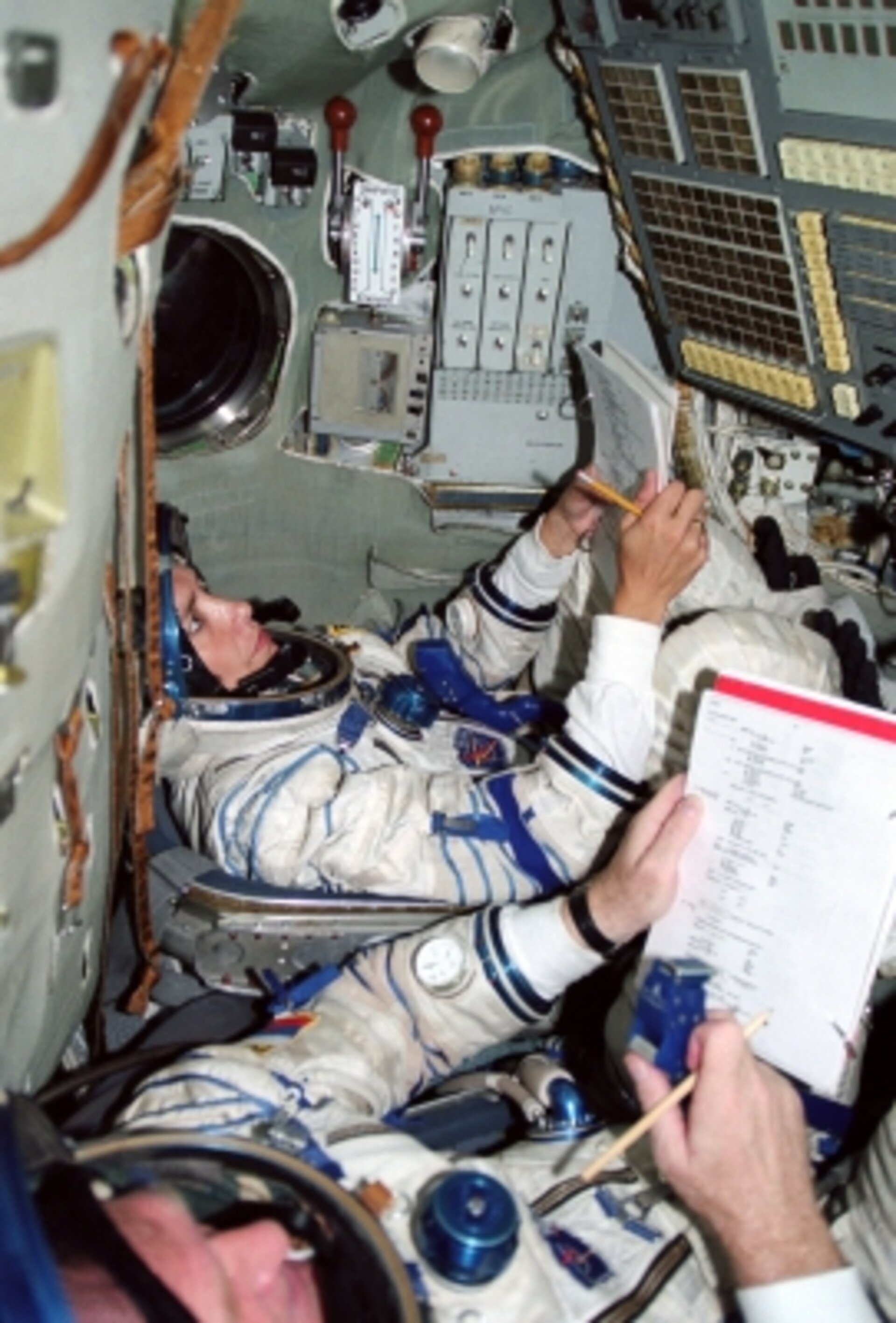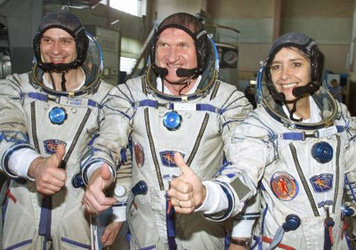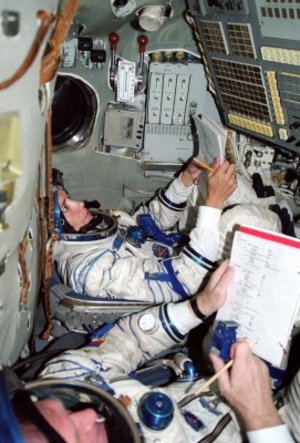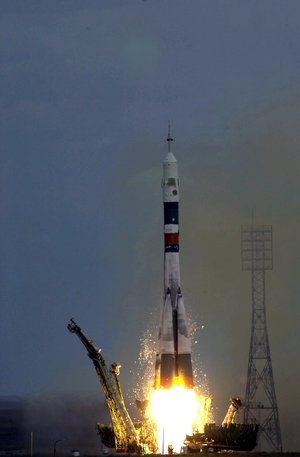Day 2: Monday 22 October 2001
Russian Soyuz 'taxi' crew Commander Victor Afanassiev, Flight Engineer Konstantin Kozeev and European Space Agency Flight Engineer Claudie Haigneré lifted off yesterday from the Baikonur Cosmodrome in Kazakhstan at 10:59:35 CEST (08:59:35 GMT) to begin their two-day trip to the ISS. Less than nine minutes after launch, the new Soyuz TM-33 craft was in orbit following the 3rd stage cut-off and its solar arrays were then deployed. At the time of the launch, the Expedition Three Crew aboard the ISS, Commander Frank Culbertson, Pilot Vladimir Dezhurov and Flight Engineer Mikhail Tyurin were asleep, flying over the border of Cameroon and Sudan in Africa.
After watching the launch from TsUP in Moscow, ESA astronaut Reinhold Ewald was full of praise for Claudie, "It is a good feeling to see a colleague from the European Astronaut Corps performing in the flight engineer position. She has done a good job and has gone through it very smoothly and with a very professional attitude - you could see that it wasn't her first time!". Reinhold also noticed that Claudie had been fully prepared, "When there was a first chance to get a glimpse back to Earth during ascent she already had her mirror ready to look out of the capsule window."
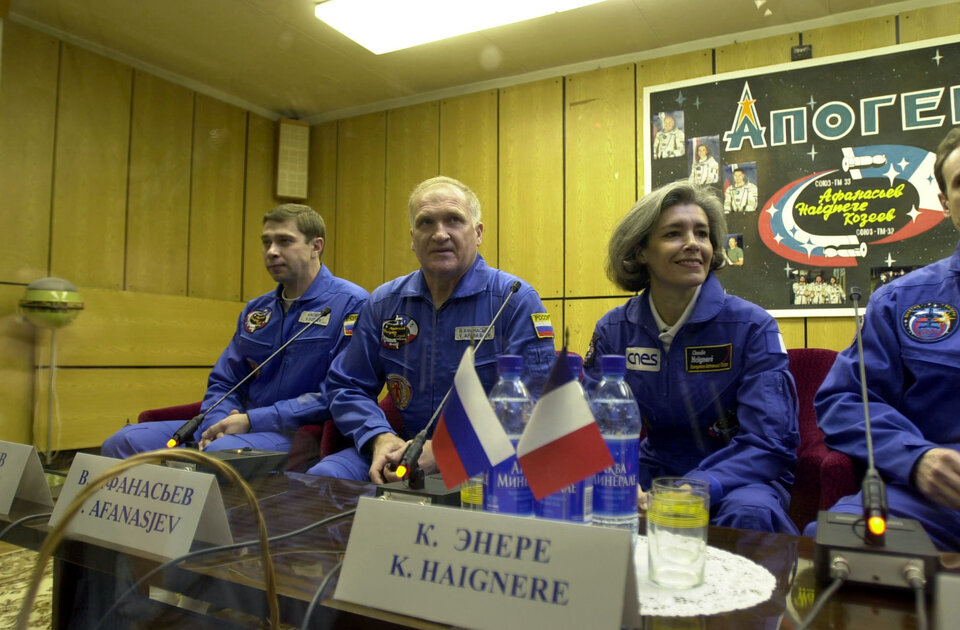
Afanassiev, making his fourth flight into space, and Haigneré, her second flight, are veterans of previous flights on the Mir Space Station. For Kozeev, 34, however, this is his first flight - ahead of the launch he said that he was nervous but: "All the same, I want to fly so much".
Claudie boarded the Soyuz capsule carrying among other items (books and photos including one of her daughter) her own personal talisman - a teddy bear. All three cosmonauts had brought a toy with them - a good luck charm and an indicator of gravity and acceleration during the ascent, which they hung from the hatch of the capsule. You could follow the acceleration profile in just watching these little toys pendulating. Finally, they floated freely in weightlessness once the last stage of the Soyuz had separated.
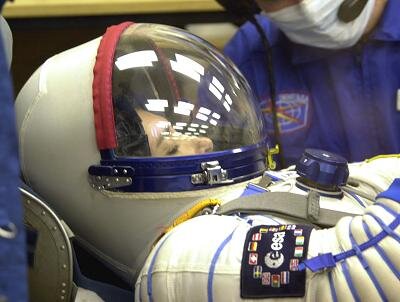
Reinhold Ewald described what will happen in the two days before the Soyuz docks with ISS, "Actually the programme that the crew performs in the Soyuz capsule after the first couple of orbits is not too crowded - it takes two days of orbital mechanics to chase the ISS before the docking. Most of this time the crew spends checking the systems of the space vehicle and resting. The capsule mostly flies in an orientation towards the Sun to recharge the batteries - you can feel the spin as a slight centrifugal force constantly tugging at you in the otherwise forceless environment. The pace of work picks up speed when in the 34th orbit, after two days, they initiate the needed corrections of the orbit to approach to and finally dock with the Space Station."
"Radio contact and some television transmission of data with the TsUP is only possible when the Soyuz is passing over Russian territory. For each orbit there are only 10-20 minutes to check how the flight is progressing, however, seven or more of the 16 daily orbits around Earth are without radio contact. The crew takes a rest or tries to sleep in the cramped environment"
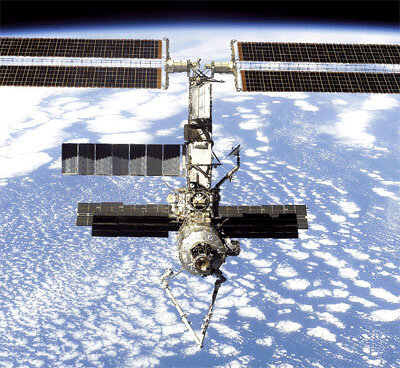
The 'taxi' crew is scheduled to dock to the ISS' Zarya module's nadir docking port on Tuesday 23 October at 12:43 CEST (10:43 GMT). Reinhold describes how they will be feeling, "After the two days in the Soyuz you are longing for a more spacious environment and most of all a hot tea and a good meal. In the Soyuz you only have cold canned food and tepid water to drink. The moments before the docking are very tense though the crew has rehearsed this moment many times on the ground. Here Claudie as a flight engineer will play a pivotal role in helping Victor Afannasiev, the Soyuz commander, to control the automatic approach and in case of any deviation switch to manual mode for the last minutes. This again will have taken them hours of training to quickly interact with each other in this critical situation."


